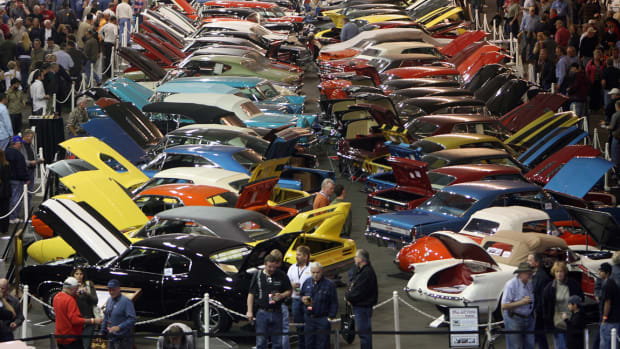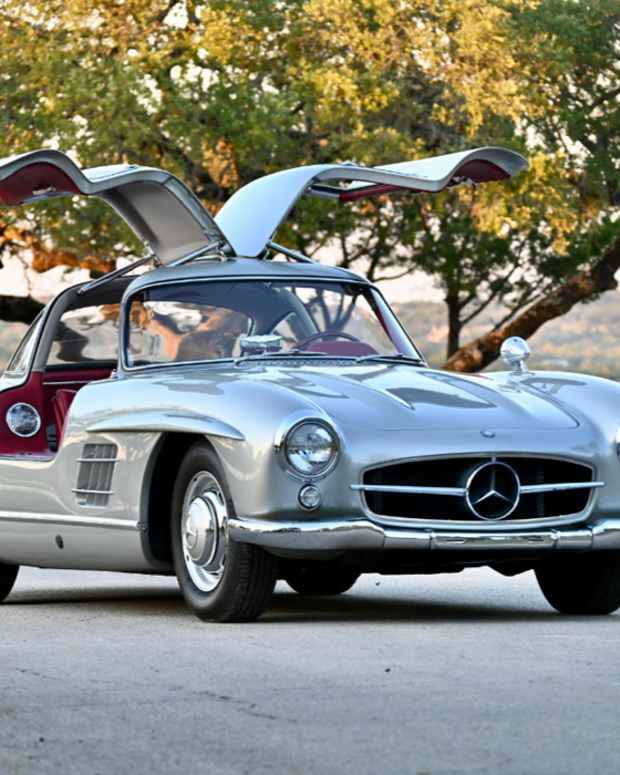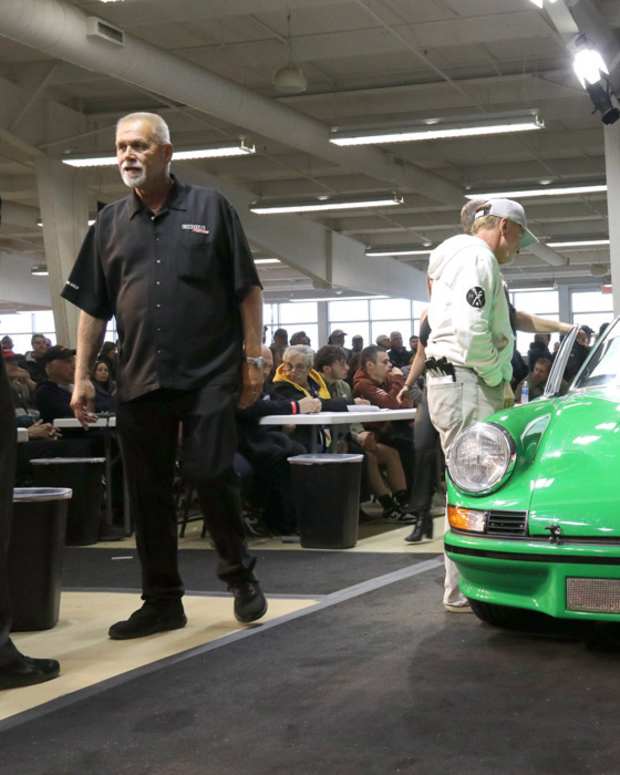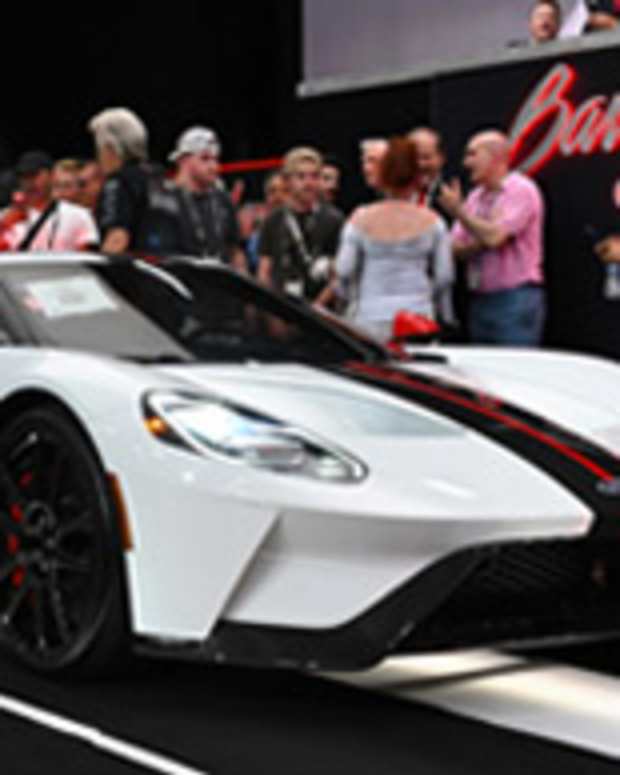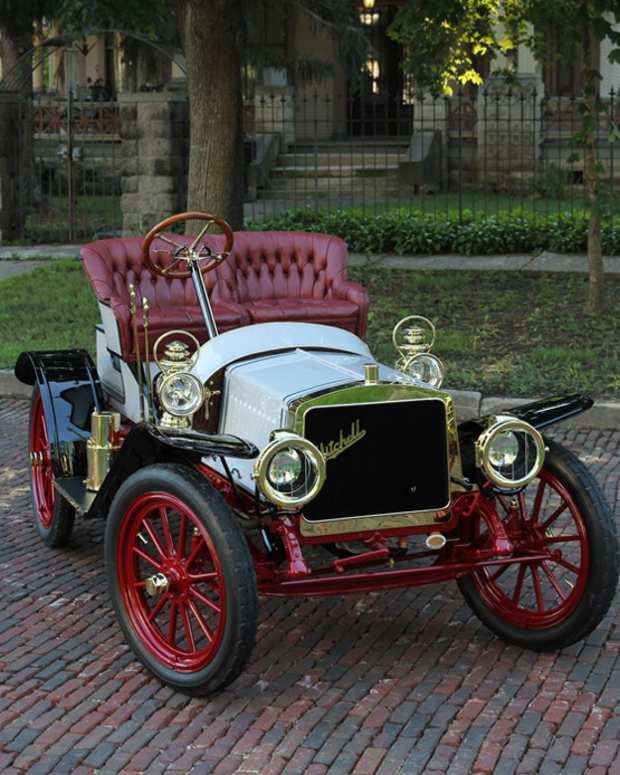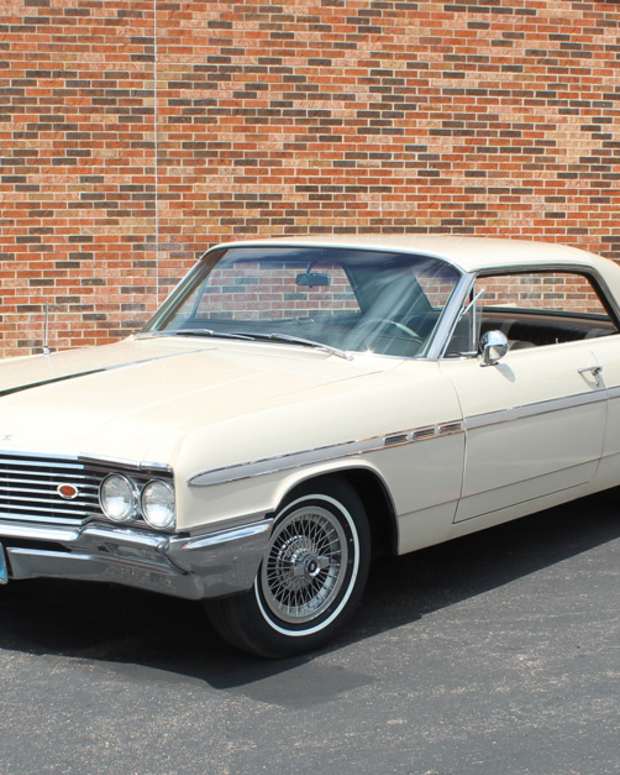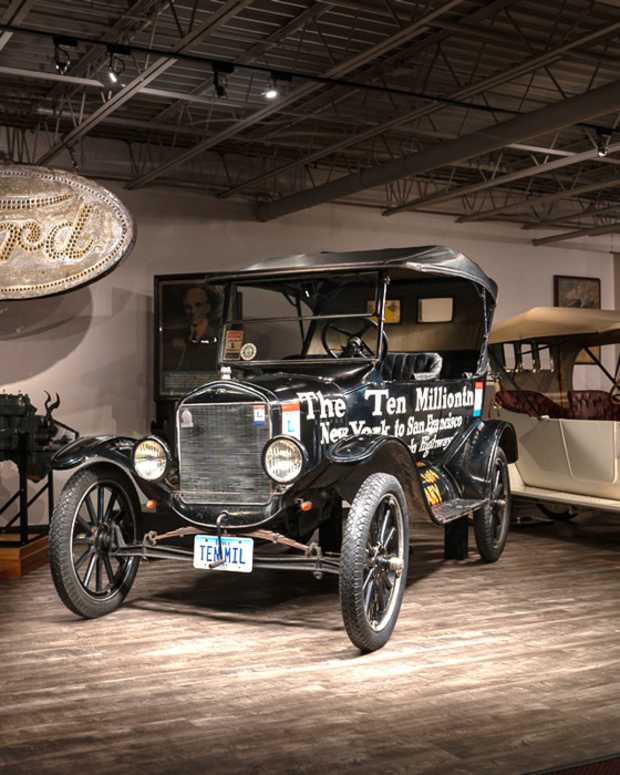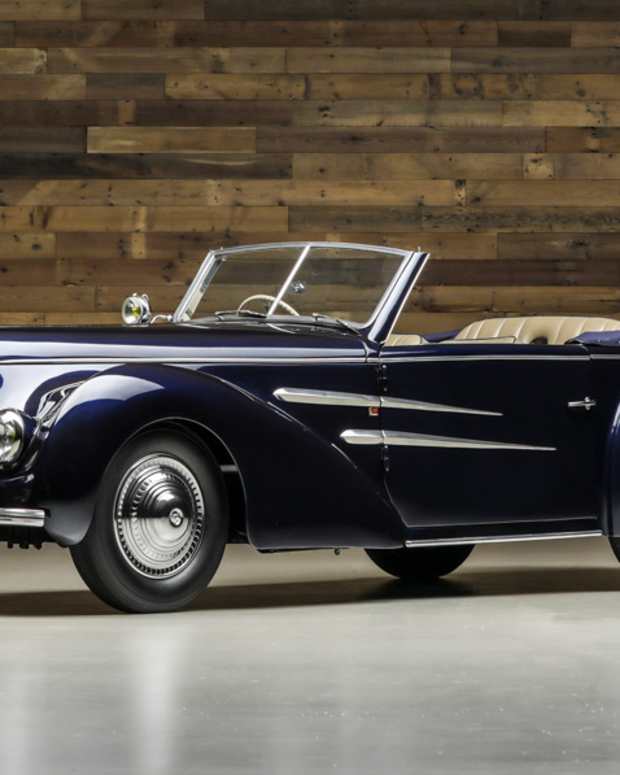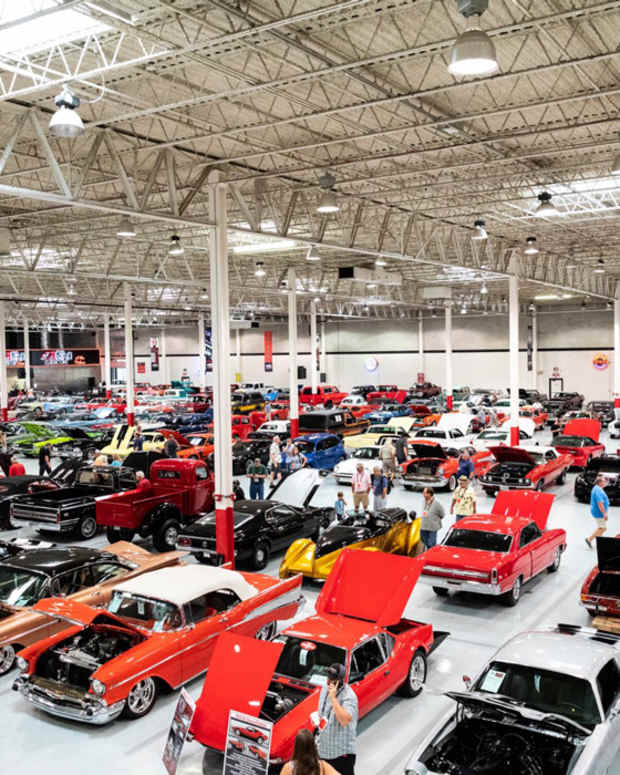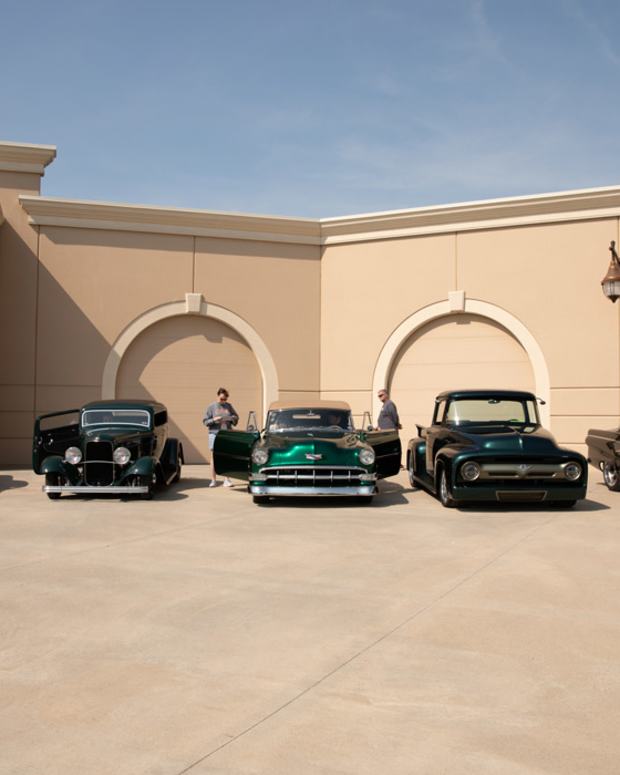10 Questions With... Jim Grundy
Insurance boss watches the hobby like a hawk from many directions
Grundy Insurance, headquartered in Horsham, PA., has been specializing in insuring collector cars since 1947, pioneering the idea of “agreed value” policies that work with car owners to determine a car’s worth. Grundy’s program has insured more than 1,500,000 collector vehicles through leading A++, A+, and A rated carriers. Many collectors and their insurance agents consider Grundy to be the preeminent agent for serving the serious collector. Grundy also provides M.V.P. Classic Boat, Special Collections, and Special Client Services program coverage.
Company CEO Jim Grundy always has his finger on the pulse of the hobby. It’s both his job and a passion — he’s a devoted hobbyist himself. He’s also a fun guy to talk cars with. Old Cars recently caught up with Jim and gave him our “10 Questions With …” treatment.
Old Cars: Have there been any trends in the collector car insurance world that have surprised you recently?
Jim Grundy: Yeah, global warming! [laughs] The escalation of losses from catastrophic weather-related incidents has really been where our focus has been … All the wildfires out West, the flooding inthe middle of the country, the hurricanes … it’s been a pretty tough few yearsand we’ve tried to step up whenever we were called upon.We’ve paid tens of millions of dollars just in claims from the wildfires on the West Coast. It’s all a combination of events that’s pretty easily tied back to the concept of global warming.
That’s on the claims side, but on other side, which is what’s going on in the collector car world, we still see it growing. A decade ago we did a pretty good analysis of how many collector cars there were in the United States and at the time it was about 18 million, and today that number has escalated to almost 25 millions. [The growth] is an interesting combination of things. One is the forever concept that an antique car is one that is 25 years old or older. That concept, of course was developed in the ’70s when it was pretty much defining cars of the post-World War II era… … Moving that concept forward to 2019 we’re now dealing with 1995 cars, 1994 cars, meeting the definition of antique, which, as you might imagine, embraces an awful lot of cars that might be ‘used’ rather than ‘collectible.’ But still, the bottom line is the number of people and collectible cars has grown probably 40 percent in the last decade. That’s automatically good for us, absolutely! [laughs]
Old Cars: Have you noticed any changes in demographics among your customers?
Jim Grundy: What we’ve all seen is the evolution of the modern sports car. The leader of that was what we’ll call the “modest” Ferraris of a decade ago, when every young technology guy who had made his first pot full of money had to display his wealth with a supercar, so that’s when they got Ferraris …. And then they jumped to Porsches and we’ve seen an onslaught of 911s like we never thought we’d see and putting values on cars multiple times what we thought we’d ever see years ago. What was typically a gray hair gentleman’s hobby, now the guy buying one of these super cars is between 34 and 38 years old, which bodes wonderfully for the future of the hobby. These young guys will mature and become more sophisticated in their tastes and become more intrigued with the earlier cars.
Old Cars: What kind of trends are you seeing regarding ’80s and ’90s cars that are now considered collectible?
Jim Grundy: The trend right now is entry-level collector car enthusiasts are interested in much more performance and drivable cars, whether you’re talking about American muscle or talking about European sports cars. They want things just like we did. When I was starting out collecting cars myself 35-40 years ago, I was interested in what I could relate to, which was American muscle cars that saw when I was 16 and couldn’t afford. Guys today are doing the exact same thing, collecting things they can now afford and relate to.
Old Cars: Are you seeing any less activity with the early cars?
Jim Grundy: When you get into prewar cars, I think it’s the same thing that I said about sports cars and the usability factor. I’m a brass-era car collector which, by definition, is 1915 and earlier. That’s kind of one group. Then from 1916 to post World War I — or about 1925-’26 — that was kind of a dormant era in car evolution because of WWI, and then the grand Classics came along, the ‘Duesenberg era’ we’ll call it. We’ve seen the grand Classics have been pretty flat or even declining in the past couple years.Entirely conversely, with the brass-era cars, there has been a big increase in interest and almost every time — and they made so few of them you don’t have to have a lot of demand — but when these cars are offered, you rarely, if ever, see one being passed on the auction block, and most of them are traded privately. With the big Classics, I think it’s a function of drivability and maturity among collectors. They’ve been pretty flat and it will take a maturing of the new breed of car collectors to appreciate them and an evolution in their financial status, because historically these are the most expensive cars.
Old Cars: What’s new on the street rod front? Have there been any changes in that market on the insurance side?
Jim Grundy: We’re the largest insurer of street rods, by far. I’m not sure how that evolved, but we were probably first to embrace them as a significant part of the hobby. There is still demand and we still see them trade regularly, and I think auction companies, particularly companies like Mecum, have embraced that area and it’s here to stay. The best part of the street rod world is, because the car is modified, the guy who gets into street rods has a certain poetic license to build anything he can imagine, and if it’s done well, it will be received well … I think it’s been steady, and just as we see in other car groupings, the best of the best are the ones that are likely to maintain the greatest interest and the strongest values. You know, steel bodies are preferred over fiberglass … period engine builds over modern replacement engines. [The ones more in demand are] akin to what started the whole street rod passion in the first place.
Old Cars: What advice do you give car owners regarding appraisals?
Jim Grundy: Historically we have been a company that hasn’t advertised that we need an appraisal to accurately calculate the value of a car. The reason for an appraisal, or multiple ones, is for insurance, but that’s only if the underwriter requests it. Another reason is for an estate plan, the other is peace of mind. You get a second opinion in your own planning for your own choice of insurance. We encourage people to get appraisals, we just don’t require it. There are so many sources of information on car valuation now… and of course everybody knows what they pay for something and what they paid restoring it.
Old Cars: What was your first car?
Jim Grundy:A woodie wagon! It was a Ford, I can’t think of the year but it was one of the last ones they made. A ’50-something. My dad had it and he put a 390 Marauder in it and took me out to a sand lot at a big dump to learn to drive it. He said, ‘You’re going to learn to spin the tires here so don’t do it on the road.’ I eventually took it to a junk yard. They weren’t worth anything in those days.”
Old Cars: What is the favorite car you have owned?
Jim Grundy: People ask me that question, and depends on what I am doing! With brass cars for touring, it would be a 1908 Lozier. It’s got 760-cubic-inch T-head power in a car that runs like a Freightliner. If we’re talking about going to brunch on Sunday morning, it’s an XK-140 Jaguar [laughs]. And driving to work every day: Bentley GT! And life is good!
Old Cars:Why the Bentley GT?
Jim Grundy: They do everything right, and they do it big, they do it grand, and they do it with style.
Old Cars: You can have any car in the world to drive for the day. You have to give it back at the end of the day. What are you picking?
Jim Grundy: A 4-1/2-liter supercharged Bentley. Best-driving car in the world.



